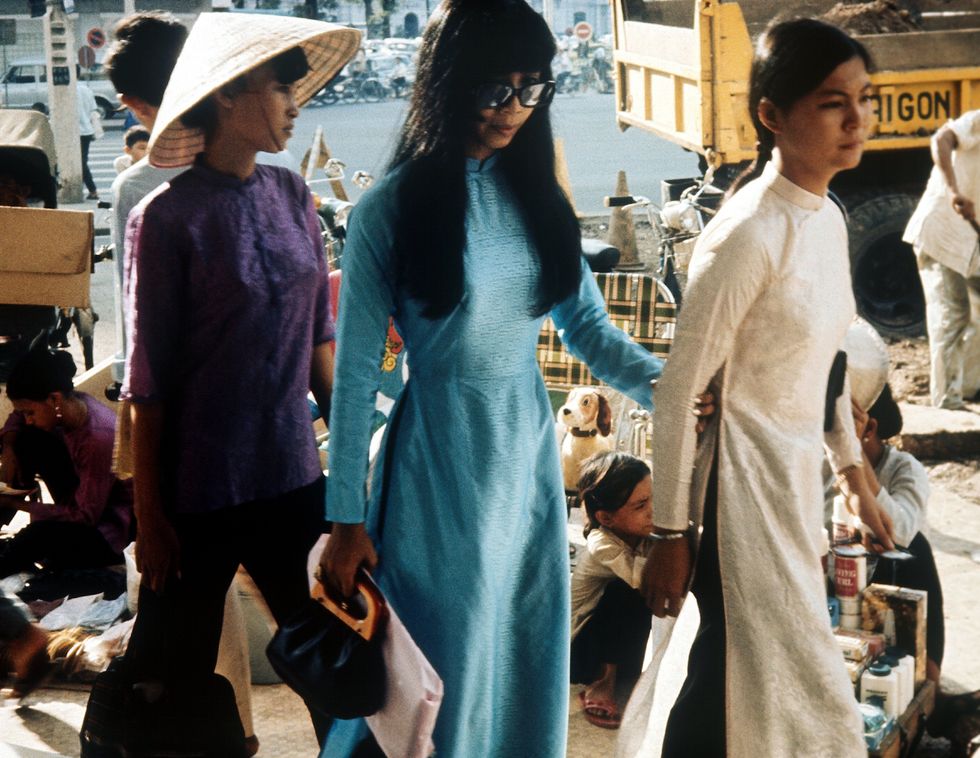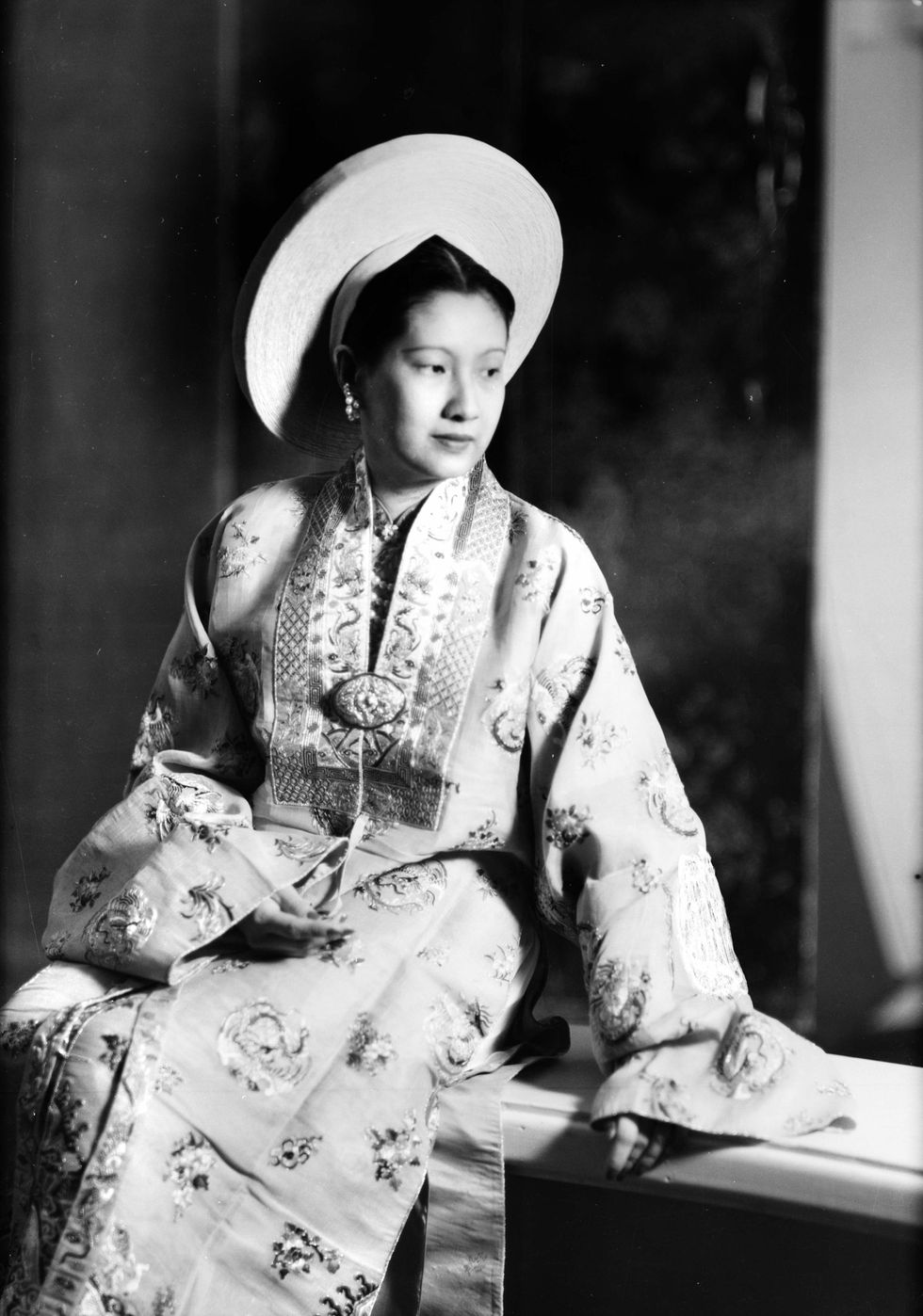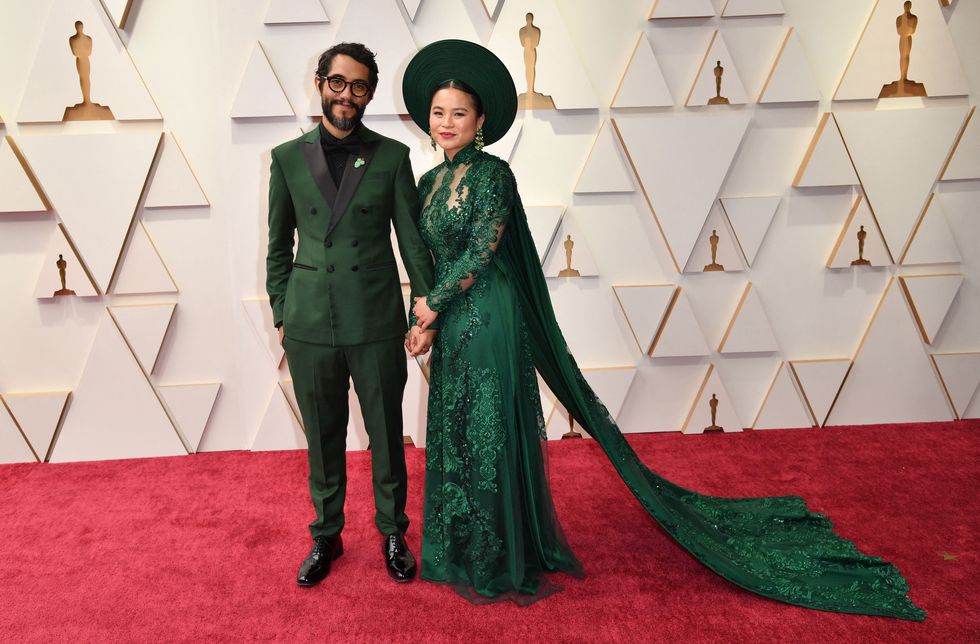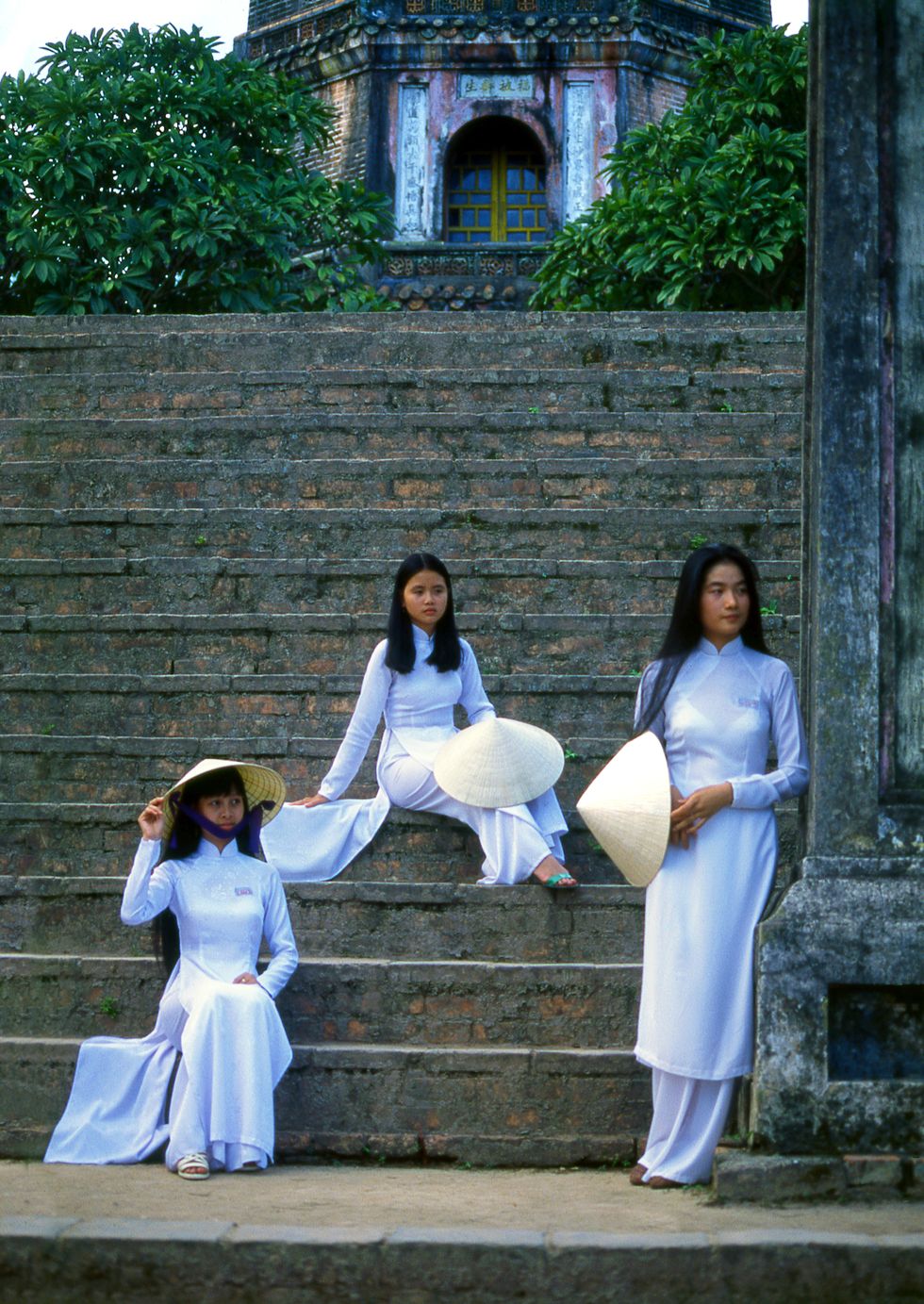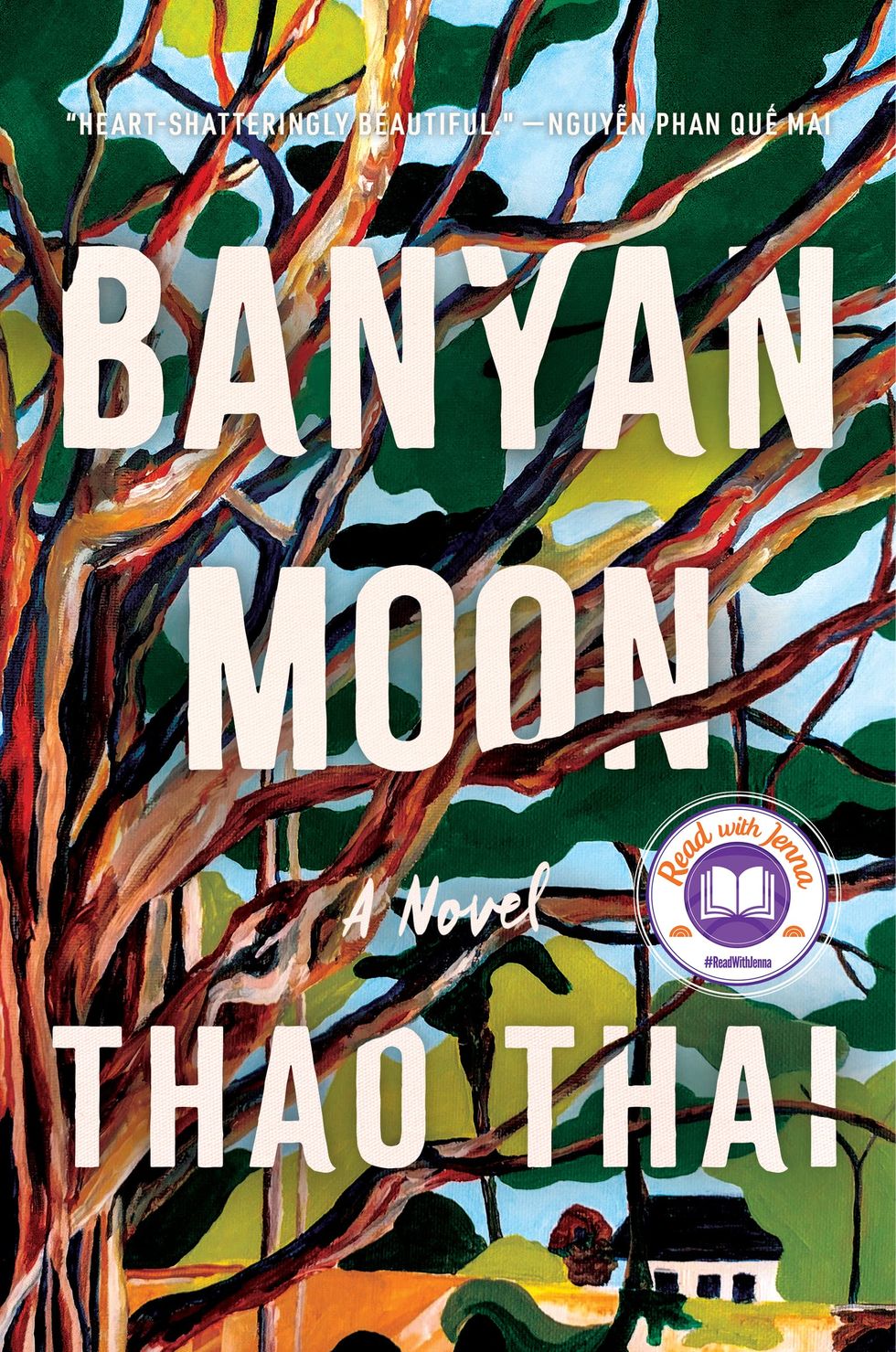As family lore goes, my grandparents’ 65-year marriage began with a white áo dài. Picture a hot spring day in the 1950s on the Mekong Delta, just a skip from the border of Cambodia, where the dirt road winds like a rusty-red serpent up onto a bridge overlooking a river. A group of schoolgirls walks home for lunch, arm-in-arm, all except one: my grandmother, who dawdles dreamily behind them in her white áo dài—what would later become the school uniform for female students in Việt Nam. My grandfather, a young traveling soldier, stands by the side of the road drinking from his canteen. The moment he glimpses my grandmother in her áo dài, silken fabric fluttering over the worn old planks of the bridge, he’s captivated. To him, she’s the picture of the Việt Nam he loves: fresh, beautiful, and independent.
My grandparents aren’t the first, or last, to hold cherished memories of the áo dài. This garment, translated as “long shirt,” has been a fixture in the cultural imagination of Việt Nam since 1744, when the southern lords decreed that men wear trousers with a front-buttoned tunic, to separate them sartorially (and politically) from the northern part of the country. Since then, this precursor to the áo dài has evolved into the garment we know today: an ankle-length split tunic, worn over a pair of white, loose-fitting trousers. Though men and women both wear áo dài, most people associate áo dài with traditional representations of femininity. The longer sleeves, stiff collar, and torso-skimming fit are all trademarks of áo dài, though these characteristics have evolved in recent years to include trendy reimaginings.
While many feel that the áo dài is a symbol of a nostalgic past, the dress is fraught with tension, standing at the precipice of tradition and progressive ideals. The modern áo dài really came of age in the 1930s, with Hanoian designer Nguyễn Cát Tường, known as LeMur. LeMur designed a fitted garment that amplified the silhouette of a woman’s body. Many criticized this garment as overly influenced by French style, but the reigning Empress Nam Phương wore LeMur’s design and soon made it a staple of the Vietnamese wardrobe. Even as late as the 1960s and 1970s, the shorter and more patterned versions of the áo dài—called Áo Dài Hippy—were viewed as subversive for their Western influence. Now, áo dài are seen as the national garment of Việt Nam, though they are typically either reserved for more formal occasions, or used among those working in education, banking, or civic- and hospitality-related positions.
Danny Nguyen of Danny Nguyen Couture offers a look at how the many ethnic differences within Vietnamese culture come together in the design of áo dài. “We represent hundreds of different languages, and all have influenced the style of áo dài, from the Chinese, Americans, and French, to the colors of Thai designs and the patterns in Buddhist religions. The concept of [of the áo dài] was never lost. It was still there, just in different translations.”
While some designers remain committed to the long, raglan-sleeved tunic, others are exploring sweetheart necklines, puffed sleeves, and an oversized, drapey fit. Some áo dài are now knee-length, a nod to the practicality of navigating metropolises on bikes and motorcycles. With globalization and a diasporic population that’s increasingly curious about its roots, the áo dài has become representative of so much more than just formalwear. It’s a way to celebrate—and maybe even interrogate—identity.
When Kelly Marie Tran wore an áo dài designed by Thái Nguyễn to the Oscars in 2022, this moment created a magnificent stir, both among Americans and Vietnamese people of the diaspora who’d never seen our national garment represented on a red carpet. It was, in so many ways, a kind of permission to exist outside of the margins, to have our culture spotlit without explanation or apology.
Nguyễn remembers receiving a phone call from Tran, who asked if it was possible to create an áo dài in three days. He said, “[That call] woke me up.” After 16 hours of work, the team at Thái Nguyễn Atelier finished the áo dài hours before the award show. Nguyễn describes the way that American PR companies and buyers once told him that his name and identity were too ethnic; they didn’t think an áo dài would ever be a mainstream garment. “I’ve been yearning for that moment,” Nguyễn says, recalling the first time he saw Tran at the Oscars. “Afterward, a Vietnamese follower sent me a photo of her five-year-old daughter in an áo dài and said, ‘She can wear this now to a birthday party, instead of a Cinderella or Snow White gown.’” In fact, Nguyễn is co-writing Mai’s Ao Dai, a children’s book about a girl who discovers the beauty of áo dài, with Vietnamese American writer Monique Truong. Such representation is already changing the way younger generations are embracing the áo dài.
However, because of the closely fitted silhouette of the áo dài and the traditional, limited sizing of Vietnamese garments, some Vietnamese women of the diaspora (like myself) have struggled to find áo dài made for them. Diana Le, a TikTokker who posted about her journey finding a size-inclusive áo dài relates, “I stopped wearing them, because … it felt like they emphasized my insecurities. [Relatives] said they don’t make áo dài for body types like mine, unless it was custom made. So my cousins … took me to a plus-size store in Đà Lạt, where I was able to find many traditional and modern [áo dài].”
Custom áo dài designers Mark & Vy focus on size-inclusivity in their designs, saying, “We want to dispel the myth that you have to be a certain body shape to wear an áo dài. To us, áo dài represents beauty, elegance, confidence, and pride in Vietnamese culture and artisanal craftsmanship. We love to see [women of all sizes] looking radiant.”
I learned that my mother gave me my first áo dài when I was 5 years old, on the very same day that we got on a plane to immigrate to America. The symbolism isn’t lost on me—my mother, sending me to a new country with a garment that represents my homeland. Over the years, I wore that first áo dài and others during Tết, or Vietnamese Lunar New Year, weddings, and other formal events. At my own engagement ceremony, I proudly wore the red áo dài my aunt had custom-made for me in Ho Chi Minh City. I’ve carefully preserved each áo dài in tissue paper, but I admit I rarely think of them in daily life. They seem too special—too removed from my regular routine as a novelist who spends most of my time hunched over a laptop.
But I’ve been avidly following award-winning novelist Nguyễn Phan Quế Mai’s tour as she promotes her latest book, Dust Child, and I notice the way she wears her collection of áo dài with pride and ease. “I think about the people who make them,” she tells me. “One tailor shop I go to is just a corner of a woman’s living room, and she has her sewing machine alongside a row of áo dài. She doesn’t advertise, but people know her by word of mouth. And she’s really busy!” Some of Nguyễn’s áo dài were gifted to her, while others were custom-made from fabric she hand-selected. “Each tells a story. I take them on tour with me, because [wearing them] makes me feel I have my homeland with me.”
My 6-year-old daughter recently did a presentation on Việt Nam for a school project. As we looked through photos, I talked about how most Vietnamese women have at least one áo dài they set aside to wear. It’s the one commonality in closets across the country. I showed her my red engagement áo dài, decorated with intricate golden flowers on the front panel. I could see her wonder in the way she traced each flower, her small finger pressing on the silk, as if she were trying to memorize something very important.
Later that day, I went online to purchase a tiny, peach organza áo dài for her, complete with satin trousers. When it arrived a few weeks later, she wore it right away, pirouetting to the standing mirror to admire herself. Watching her obvious glee, I realized that while I can’t give her everything from my past, I can give her this one thing, a space for her to exist between worlds, a proud citizen of both. One day, I’ll take her back to Việt Nam with me—maybe to the very bridge where my grandparents first met—but for now, we’ll find other ways to reconnect with a homeland that is never lost, only translated.

Thao is the author of Banyan Moon, a Read with Jenna pick. Her work is published in the Los Angeles Review of Books, WIRED, Elle, Lit Hub, Electric Lit, Catapult, The Sunday Long Read, and other publications. She lives in Ohio with her husband and daughter.

